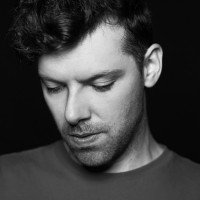Behind the Scene
October 17th, 2019
Halloween Interview with Simon Boulerice

For Halloween, the Museum is inviting you to take part in the Strange Ghosts of Pointe-à-Callière activity on Saturday, October 26 and Sunday, October 27, 2019. To give you a little taste of what to expect, we spoke to the writer of the activity’s script, Simon Boulerice, about ghosts, Halloween, the site, and his inspiration for offering an event that is at once interactive, fun, and mysterious!
Who are the Strange Ghosts?
There are three characters, two ghosts and a guide. Isidore, the guide, is not a ghost, although he isn’t at all young—he’s celebrating his 205th birthday! All of his family members, including his father, died from cholera. The first ghost is Charles, the guide’s father who is a watchmaker and who made two very special watches. The first one is a watch/compass for his son, to help him find his way around, and the other one is for Ismérie, the second ghost. She is the next-door neighbour’s daughter—to whom Charles was very close. Like her mother, Ismérie is a great singer. What she wants most of all is that her watch will stop time for her forever.
What is the main idea of the story?
The story starts when Isidore bumps into Ismérie, which results in a watch swap… then, he loses Ismérie’s watch. I should mention that Isidore is a very awkward and clumsy guide! He’s very appealing to children because of his imperfections and his sense of humour… and because he gets lost everywhere, all of the time. I thought it would be funny to have a guide who can never find his way around. What’s fun is that the activity involves a set of riddles to help Isidore find the watch. Children get to look into the pipework… to listen… there are tick-tock sounds everywhere throughout the Museum. At the end of each section, there’s a riddle that gets us a little bit closer to the lost watch.
What do we learn about Montréal history?
As the activity takes place in the archaeological remains of Montréal, we make our way to various sites, most notably the first Catholic cemetery where Charles, the father, appears. The guides also spice up the proceedings with their own knowledge. The appeal is really in the opportunity to visit these sites in a fun and theatrical way. It’s an interactive exercise in which the guides invite the children to participate. However, when the actors “take the stage,” it’s impressive, and it immediately puts us in a theatrical setting. The children admire our ghosts from a distance to a certain extent, as if something along the lines of an apparition was really taking place.
How is developing the script for an activity different from that for a play?
There is some theatre in this, but I must admit that it was the site that really guided the writing. I’m one of those people who like to take inspiration from places… they’re full of history and memories, especially these, right here. For example, at the end of the collector sewer, there’s a backdrop that melts and is revealed each time you go through. I used this same approach for Ismérie’s face. She too has a face that melts and is constantly renewed—sometimes sad, sometimes hysterical. I especially like to work with what the site has to offer and let it all make its way into the dramaturgy and the script itself. How can the place lead my character in another direction? This is really what feeds my writing.
Among potential challenges, interactions with the children had to be taken into account—did you plan for this in the writing?
Yes! I’ve worked with children quite extensively. I write a lot of children’s theatre and novels, so even though I don’t have kids myself, I think I am nevertheless a sponge when it comes to their imagination. I also project my own imagination onto them when the guide asks them questions like: “What is your Halloween costume going to be this year?” or “Now, we’re going to play detective! What does a detective wear?” I remember that back in kindergarten, it might have been fun to say: “He often wears a hat” or “He needs a magnifying glass.” I opted for simplicity, but with references that are in their spectrum of knowledge. For me, the most important thing is that the work speaks to them.
How do you combine the historical/archaeological aspect—which is very factual—with fantasy and imagination to come up with an entertaining activity?
I think that the theatricality and the fun of it have to have the upper hand. I really feel that it needs to transcend the story and the subject matter. I didn’t have a historical mandate, but in starting with the site, I immediately had a solid foundation for my story. This is why Isidore is 205 years old—not situated in the recent past, but rather much more historically rooted and in step with historical periods, like the cholera outbreak.
Finally, what are three good reasons people should take part in the activity this year?
I reworked the script compared to last year… there’s also a new actress-singer playing Ismérie, and the costumes have been taken up a notch! You should to take part this year for the enhanced sounds, improved visuals, and the fine-tuned blend of humour and mystery. There’s a good reason it’s called Strange Ghosts of Pointe-à-Callière!








